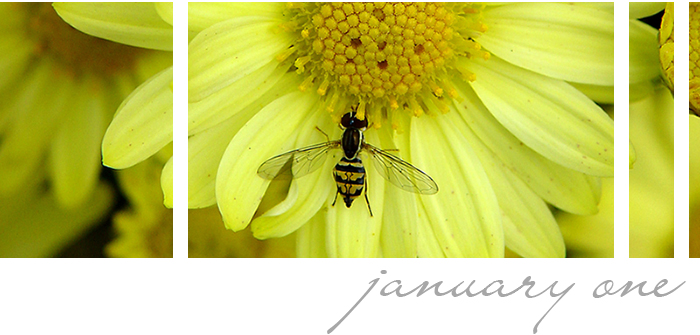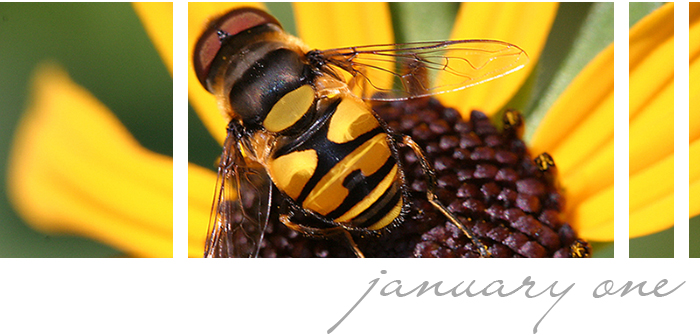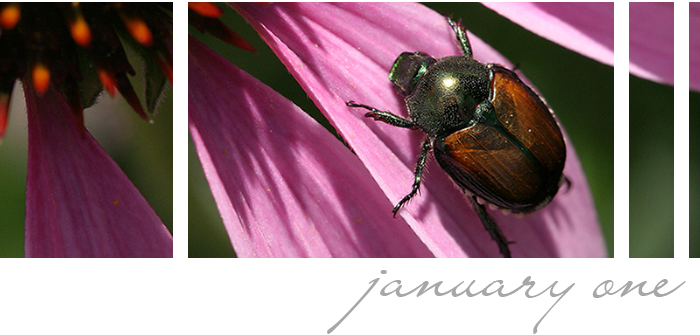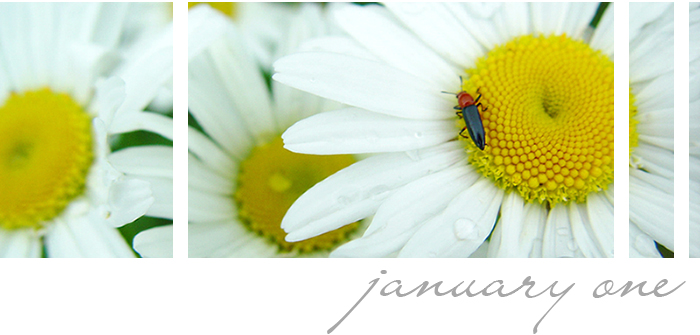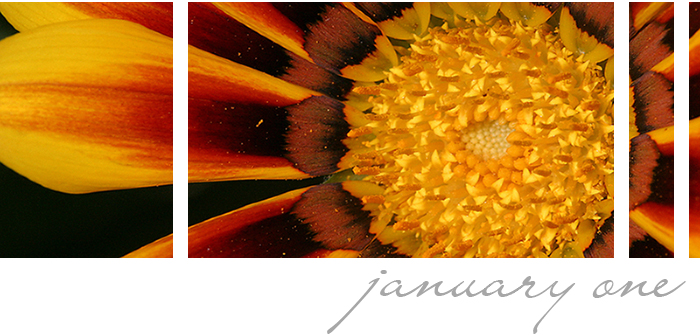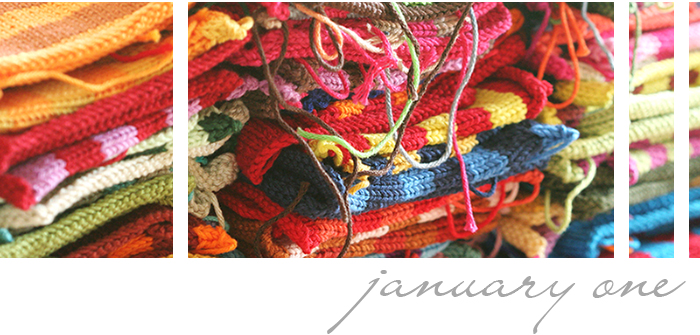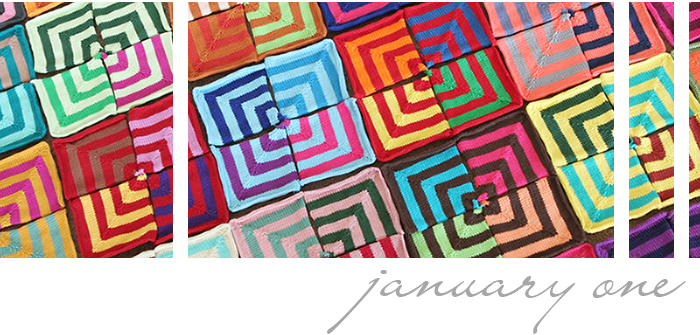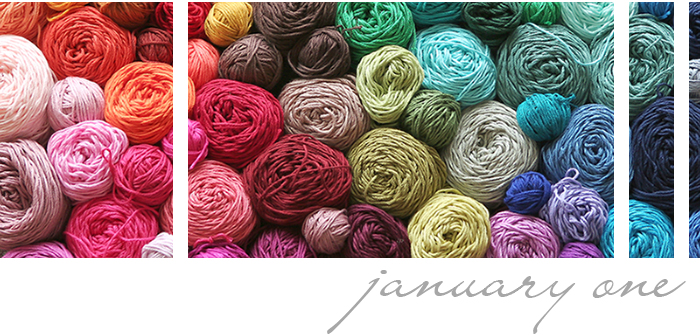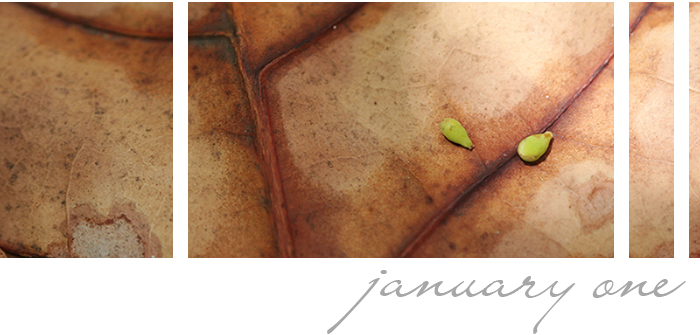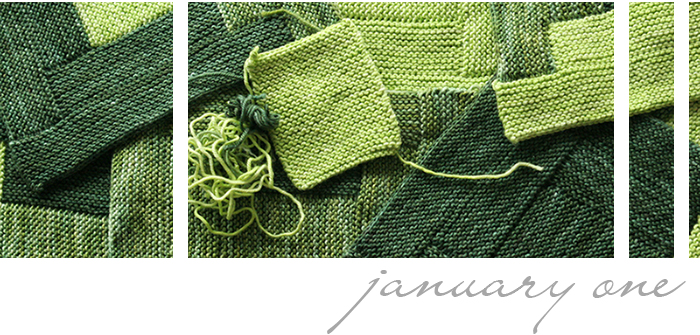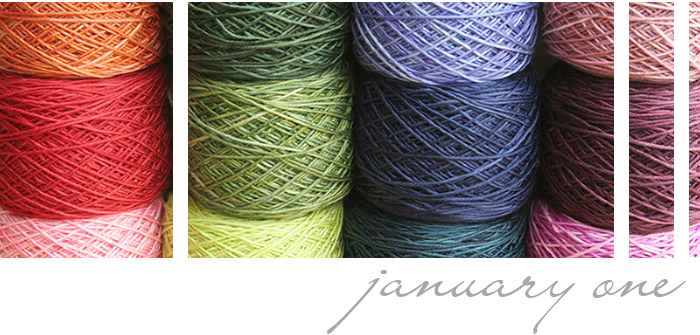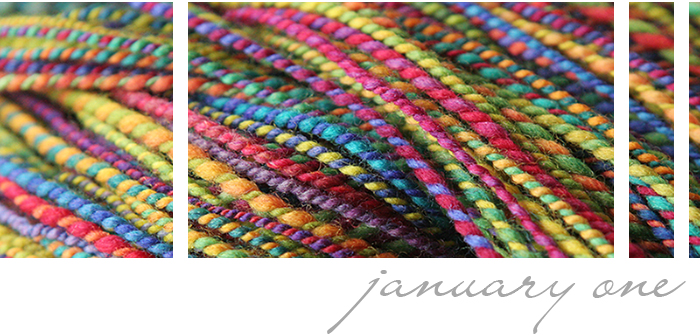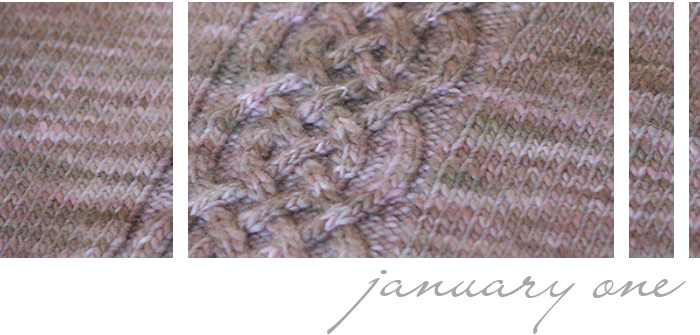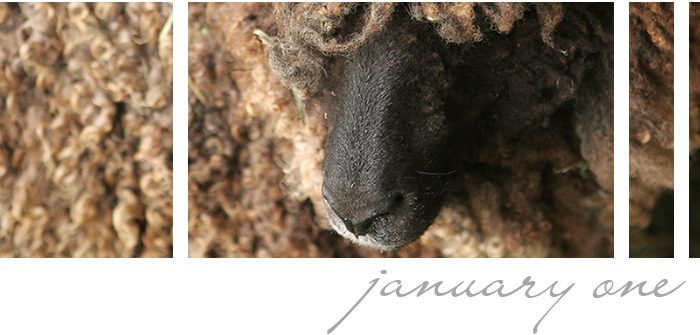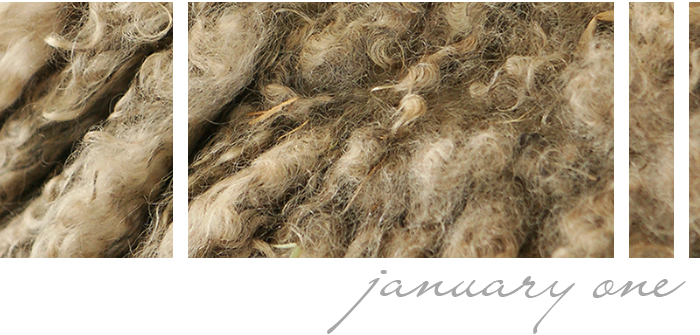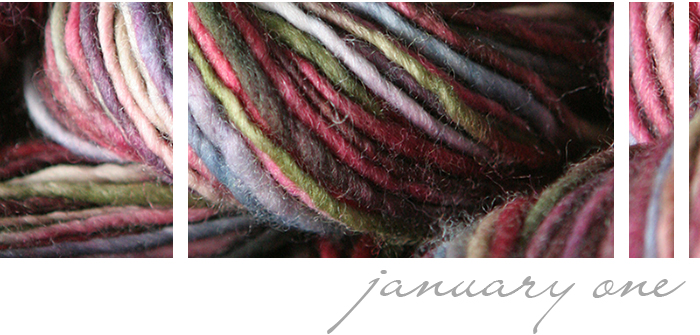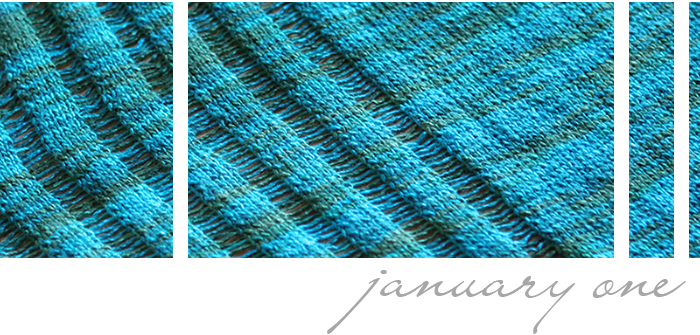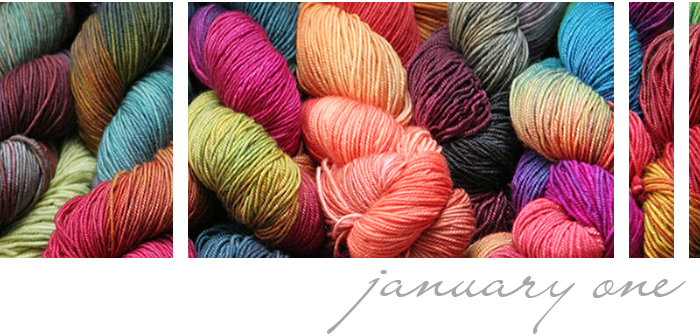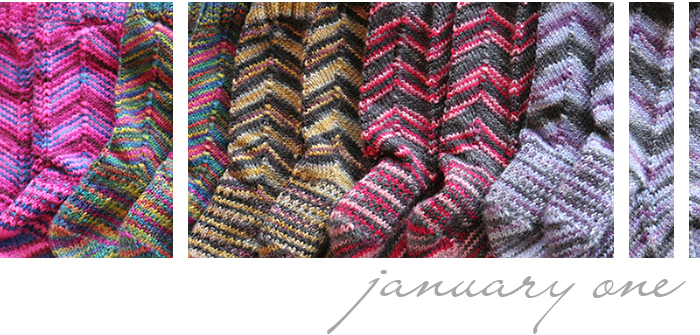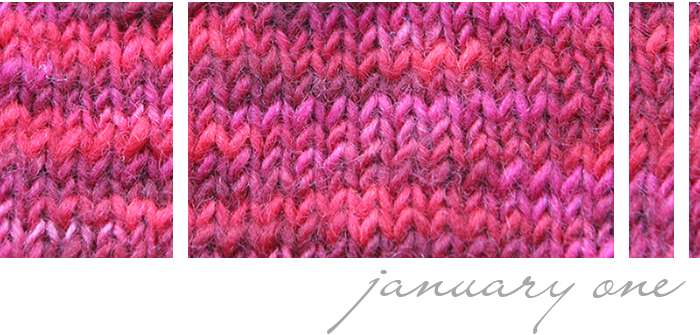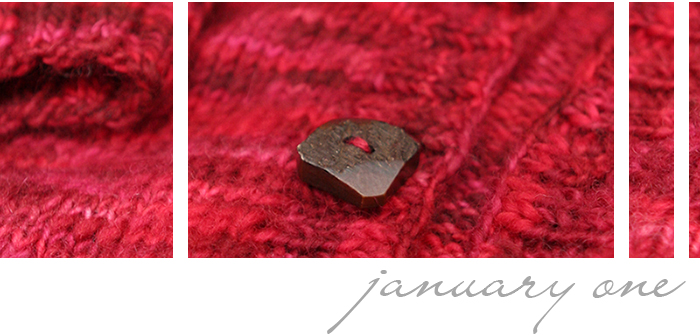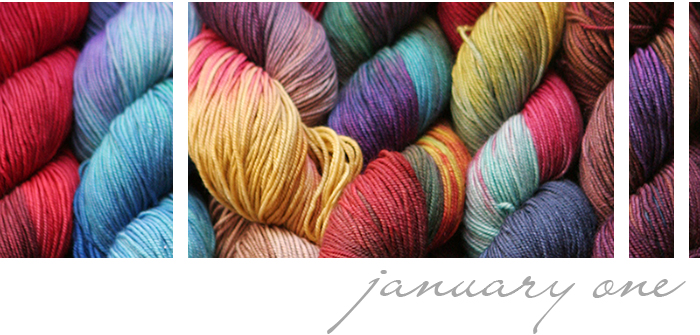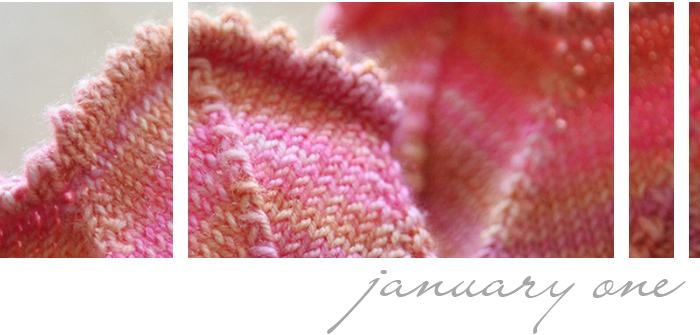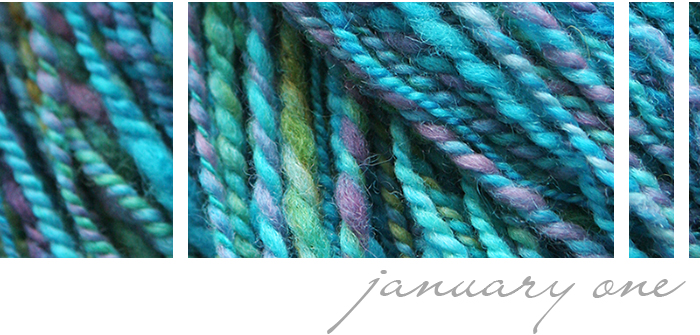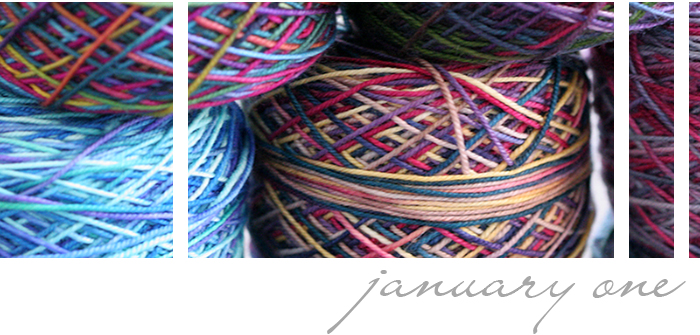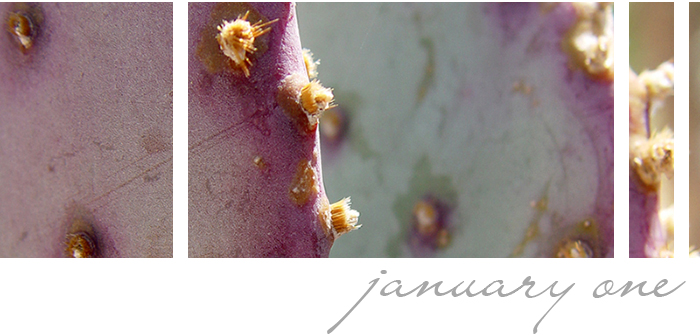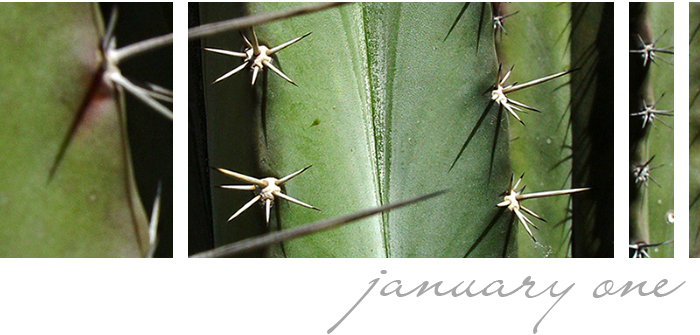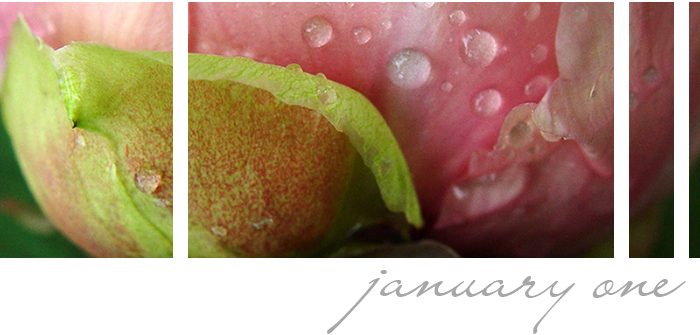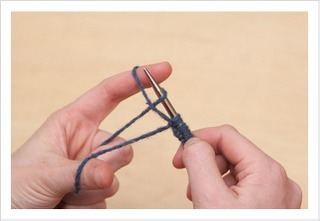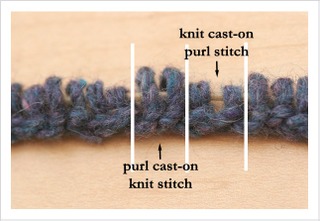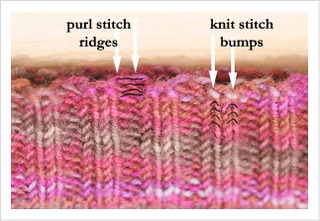*** This is a VERY picture heavy post. Hopefully it’s worth it! ***
Yesterday my partner in crime had to work (and when I say work I mean spend all day in a yarn shop knitting. And occasionally selling some yarn.) I was telling her about my blog post, the one where I swore up and down in Latin, and the cell phone connection was sketchy at best. She kept asking me “Who are Janice and Marge?” And I’m all, “I don’t know. Who are Janice and Marge?” It was like that old(ish) cell phone commercial where the wife asks the husband to take a shower and comes home to find the kids covered in flour. You know which one I mean? I’m trying to freaking curse in Latin, telling her about Janus and Mars and she’s asking about two ladies of a certain age who play Mah Jong twice a week. If you must know, Ann insists on being Janice, which I guess leaves me Marge. (Sometimes we talk about taking our show on the road – you know – like having our own podcast, because honestly we’re so fucking funny together. But usually we come to our senses and realize that while in our own minds we’re the next Lucy and Ethel, really we’re more like Wilma and Betty. Just not that funny to anyone else.)
I’m in that whole Never Say Never Again mode because I’m about to rock your world with a tutorial that amazes even me – and I’ve done it (PERFECTLY) twice already. I’ll be trying one more time before I move onto the REAL DEAL. This shit’s like ALCHEMY. Okay – first the props: Thanks to my Janice – always telling me what an ass I am. Stephanie – for letting me know I had options; Margene, who first told me to CUT IT, JUST CUT IT! Then to Jenn, who reminded me that she fixed a cable in the issue of Yarnival I edited. Jenn led me to Vicki in Michigan who actually did CUT IT, JUST CUT IT! Then Margene told me to email Terry, who she thought had also CUT IT, JUST CUT IT! Terry told me to look in the Harmony Guides Knitting Techniques, Volume 1, p. 67 – which I happened to have on my shelf and which told me EXACTLY what to do – even using my cable as the example. Terry also pointed me here – another person who CUT IT, JUST CUT IT! And, of course, to all of you, who definitely have my back. THANK YOU!
Okay. Take a deep breath and prepare to be amazed. Not just from the results, but at how fucking EASY this is. (Click on any and all pictures for a bigger view.)
STEP ONE:
Prepare your instruments. I told G what I did when he got home last night and he told me I was like a surgeon. And it’s true – so sterilize your tapestry needle before performing any cutting.
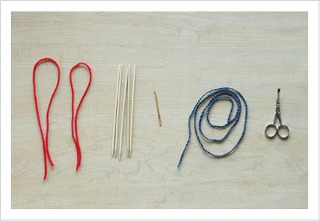
From left to right we’ve got: two lifelines (any extra yarn you’ve got lying around – preferably a bit smaller so you can get it in and out easy); double pointed needles (yesterday I went to the craft store to pick up some dpns because I have like 2 sets in all of my needles. I bought 9s, 8s and 5s – I’m using 9s for my project, but thought maybe I should use something smaller. I ended up going with the 5s and it was fine); tapestry needle; project yarn for grafting; SCISSORS. Yes, we’re going to CUT IT, JUST CUT IT!
STEP TWO:
Okay. The first step is to isolate the stitches that need to be fixed. But first, let’s show a picture of what the swatch looked like before the fix:
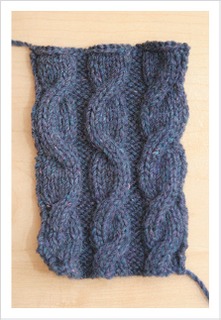
Nothing up my sleeves. 😉 We’re going to be working on the middle cable today. This cable is a 6 stitch cable – I’ve pulled the first three stitches to the FRONT (for a left leaning twist) when I should’ve pulled them to the BACK (for a right leaning twist.) The thing about cables is that the stitches are almost suspended in the air where they twist. You could conceivably slip your finger through the hole that appears once the twist has been made. For instance:
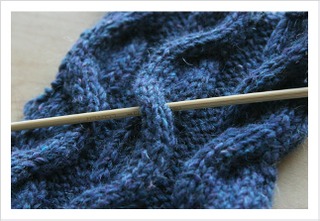
I’ve slipped the dpn through the hole so that I can isolate the middle row on top of the cable. It’s the only row that isn’t really attached to any other knitting. There are three stitches there. I’m going to cut the MIDDLE stitch.
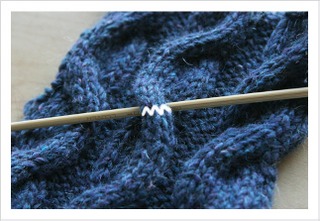
STEP THREE:
Now that I know which stitch I need to cut, I want to anchor the rows above and below the middle row – these are going to be the stitches I graft together, so I want to make sure they’re safe. I do this by threading a life line through both rows.

I used a yarn that was smoother and thinner than the yarn I’m using for my project – it’s also a contrasting color. Things you might want to consider when choosing your scrap yarn. I also like to use a lot of yarn in these instances – this minimizes the chance that the lifeline will slip out. Great! Now comes the FUN PART!
STEP FOUR:
CUT IT! JUST CUT IT! Yes, my friends, we’re going to cut the stitch. Which, I’ve got to admit, wasn’t that hard and was strangely exciting. Like you’re doing something really really really wrong but it feels kind of good at the same time. TABOO. Alright. Calm down Janice. Before we cut the yarn, we want to double and triple and quadruple check that we’ve got the right stitch to cut. WE’RE ONLY CUTTING ONE STITCH! It’s the MIDDLE one. Okay? THE MIDDLE ONE.
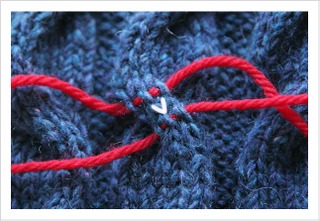
Good! We’ve identified the middle one. Identified it again. And again. And then lit a candle to Athena. Now we can cut.

SNIP!
STEP FIVE:
Breathe. Breathe. It’s only yarn. We can reknit it. We can make it better than it was before. Knit it stronger. Now you’ll need your DPNs. You can pull the cut stitch a little bit, but I prefer to put the newly live stitches on the dpns before I really separate the cut yarn.
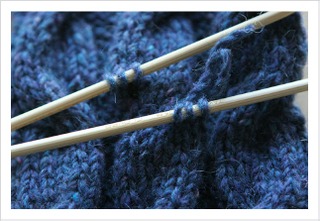
Once the stitches are on the dpns, you can take your tapestry needle and unravel the cut yarn. It’s all going to open up so nicely. And what you’re going to see below the stitches you just unraveled are the stitches that were twisted BEHIND the cable stitches on the top. They look all nice and neat and completely untouched. Just the way we want them to be.
STEP SIX:
Here’s where we re-twist the cable. What we’re going to do is SLIP the DPN with the stitches on it BEHIND the untouched stitches.
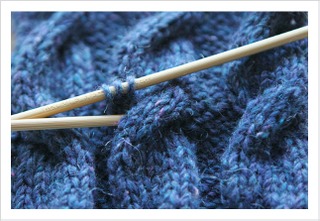

This part is a little bit fiddly because you need to get the DPN completely behind the stitches that will now be on TOP of the cable twist. When you’ve gotten one DPN all the way through – so that you now have all three stitches UNDER the new cable twist and at the BACK of the swatch (project) – maneuver the second DPN the same way. Now you’ve got the six live stitches in the BACK.
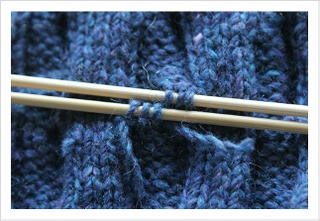
STEP SEVEN:
Now we need to somehow attach those live stitches together. I’m going to say the word that people seem to hate: KITCHENER. I actually LOVE to kitchener stitch. Think it’s so freaking cool (again with the knitting alchemy) and have it completely memorized. So I kitchenered the live stitches together using a fairly long strand of project yarn.
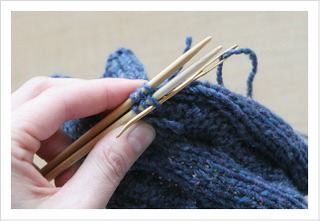
(Thanks G for the picture!) All I did here was kitchener the six stitches together leaving a pretty long string hanging down. Basically we’re putting back the row of stitches we cut out. Here’s what the back looks like after kitchenering.
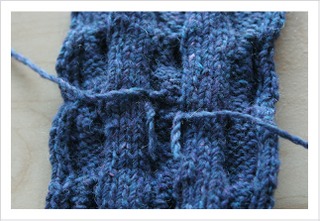
Not bad huh. If you need to learn how to kitchener, there are about a million internet sites to teach you. Here’s one I like. Okay, moving on.
STEP EIGHT:
Now you’ve got four strands hanging out in the back of your work:
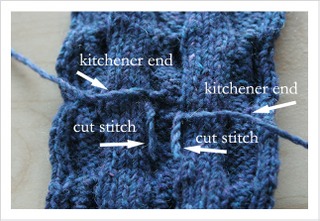
All that’s left to do is weave in those ends. Chances are your cable butts up against at least a couple of purl stitches on the front – which leaves you knit stitches on the back which are SO easy to weave into. For the shorter strands – the ones from the cut stitch – I like to weave the tapestry needle through the stitches first, then thread in the short yarn and pull it through. I really didn’t have any problems weaving everything in. See?
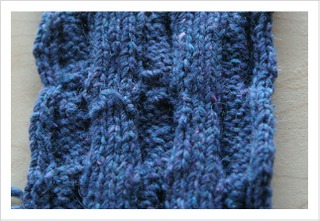
And here’s how it looks when you flip it over.
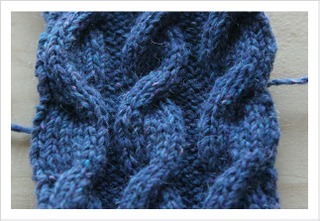
And here’s how the swatch looks:
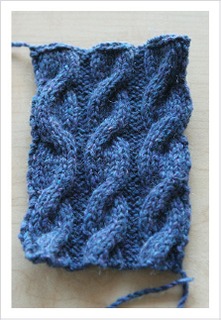
And here’s how I look knowing I can fix my sweater and have it look absolutely perfect without having to rip back pretty much the whole thing:

Still scary but much, much happier! Can you believe how easy this is and how fucking fantastic it looks? I’ve done it exactly twice now and both times it’s been so easy and comes out PERFECT. I will be trying it on the one last cable on the swatch – because it’s in the same position as the cable on my sweater, but I’m pretty confident it won’t be that big of a deal to cut the stitch on my sweater. I HIGHLY recommend making a swatch and practicing first before you attempt this on an actual project. I hope this tutorial helps you. When I called Janice last night to tell her that I had FUCKING DONE IT AND IT’S PERFECT, she said now aren’t you glad you made that mistake? Don’t you feel all empowered? And yes, I felt incredibly powerful. Which is kind of odd because all I did was snip a little stitch on something that I could easily have knit over again. But I guess it’s that I took control and FIXED it. I BOSSED MY KNITTING AROUND. Here’s to the power of knitting. And to an amazing community of knitters. Thank you!
PS – There’s an excellent chance that someone who comments on this post will hit a BIG number for me. That person will win a prize. It might be this post, it might not be, but it’s coming. Have fun!
PPS – THE NUMBER’S BEEN HIT! Loribird left the 18000th comment on the blog! I’ve been waiting for this for a while now – and it’s totally appropriate that it came today because 18=LIFE and I just breathed new life into my knitting. Thanks for reading everyone! I really appreciate it!

